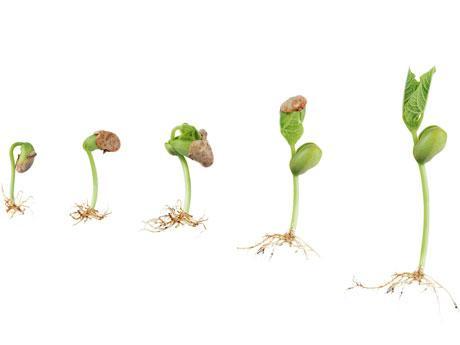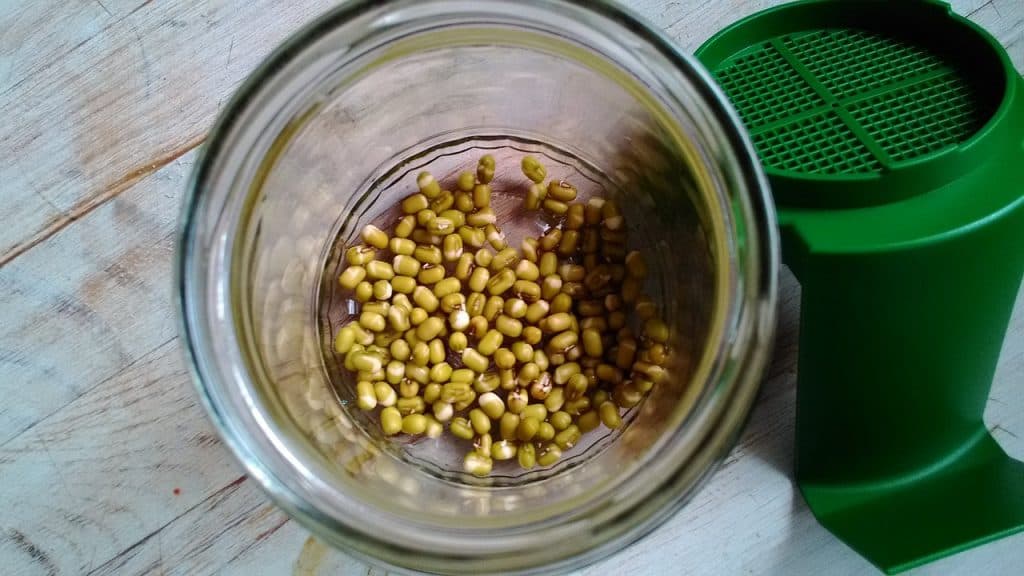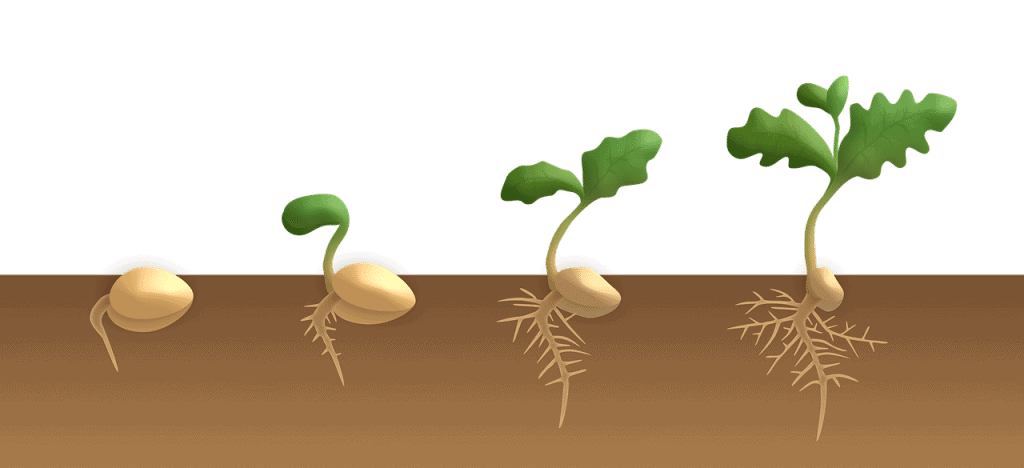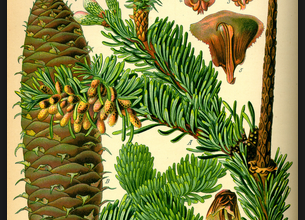What is a Germinator? How can we make a homemade one? [Complete Guide]

What is a germinator?
The special apparatus or chamber that allows, under controlled conditions of temperature and humidity, to exploit the germinative power of the seeds is called a germinator.
Wikipedia has a complete definition where the entire germination process is described, «by which an embryo develops into a plant.»
In this famous web page it is explained that this process occurs when an embryo swells and the seed envelope bursts or breaks.
Several conditions necessary for a positive, healthy development of the embryo are described, such as:temperature, water, presence of carbon dioxide and mineral salts.
Germination, in short, implies everything that expands or develops into a larger being from a small one called a germ, being in fact a mechanism of sexual reproduction inherent in plants.

What is it for?
Under optimal conditions, a germinator is a very simple natural way to make seeds thrive to obtain seedlings of any plant species, which we can then plant in pots or gardens.
How do we make a homemade germinator (step by step)?
Making a germinator is a fun and even maternal experience, because we will give life to an extraordinary being that will be born in front of our eyes.
The steps are very simple and evoke primary education classes, where with the help of beans, teachers teach step by step how to obtain a seedling in a short time.
Let’s see how it happensthis miracle of nature.
- Introduce a blotting paper or cotton that you will shape into a cylinder to be able to mold it well to a very clean transparent glass jar.
- The central spaces of the jar will be filled with a little sand.
- The seeds should be spread halfway up the jar and into the blotting or cotton paper, very carefully.
- The jar or germinator should be placed in a place where it receives the morning sun’s rays.
- N ever soak or overwater your sprouter. That action will ruin everything, because the seeds will rot for sure.
- You should rotate the sprouter every couple of days so that all the seeds get as much sunlight as possible.
Where can I buy a germinator?
If you do not want to make a germinator with your own hands, you can buy one, the best way is to look for models, on specialized online sales pages. There are currently seed germinators and electric propagators. Yemiany Germinator Jar, Germinator, Kit of 2… (16) View on Amazon Prices with VAT without transport
Germination Lids, 4 Pieces Germination Lid Set… (14) €16.67 View on Amazon Prices with VAT without transport
Gefu ge18910 bivita – Seed Germinator… (525) €22.36 View on Amazon Prices with VAT without transport
Last updated on 08-01-2022 / Affiliate Links / Affiliate API Images
4X Plastic Trays for Germination of 200… (4) View on Amazon Prices with VAT without transport
YAKOK – Seed trays, 10 units of 50… (twenty) €26.99 View on Amazon Prices with VAT without transport
WADEO 4 Layers Seed Germination Tray… (292) €30.99 View on Amazon Prices with VAT without transport
Last updated on 08-01-2022 / Affiliate Links / Affiliate API Images
 GEO – Mud germinator, very spacious for… (84) €35.00 View on Amazon Prices with VAT without transport Discount!
GEO – Mud germinator, very spacious for… (84) €35.00 View on Amazon Prices with VAT without transport Discount!  iDOO Indoor Garden, 12 Pods Indoor Gardening… (3797) €139.99 €129.98 View on Amazon Prices with VAT without transport
iDOO Indoor Garden, 12 Pods Indoor Gardening… (3797) €139.99 €129.98 View on Amazon Prices with VAT without transport AeroGarden Harvest – Smart Indoor Grow Kit… (617) View on Amazon Prices with VAT without transport
Last updated on 08-01-2022 / Affiliate Links / Affiliate API Images
The germinators and propagators will support us when it comes to processing or germinating our seeds in the winter period, when it is a little more difficult to obtain ideal conditions of humidity, temperature and we need to protect them from the wind so that they can prosper.
There are electric models and prices with variables, but accessible to any pocket.
What types of germinator are there?
As we have already explained, electric germinators are available on the market, conventional seedbeds with very functional designs created with their protective covers and electric propagators, also very useful for our seeds to grow strong.
There are even enameled ceramic plate germinators and even a complete germination kit that even includes the bag of seeds, in various prices and sizes.
But it is also convenient to point out that there are two types of germination processes, which we must know in depth. Let’s see what they are:
aeroponic germinator
Aeroponics is the process of growing plants in an air|air or mist environment without using soil.
The word «aeroponics» comes from the Greek words aero and ponos, which mean air and work, respectively. Aeroponic cultures differ from conventional hydroponic cultures and in vitro growth.
Because water is used to transmit nutrients, aeroponics is sometimes referred to as a type of hydroponics.
ROOT AT IT Mycorrhiza Aeroponic Germinator of… €10.00 View on Amazon Prices with VAT without transport
ROOT AT IT Mycorrhiza seed germinator… (1) €15.00 View on Amazon Prices with VAT without transport
Last updated on 08-01-2022 / Affiliate Links / Affiliate API Images
epigeal germination
Epigeal germination: it is a type of germination from seedlings called epigeal, where the cotyledons emerge from the ground thanks to a considerable growth of the hypocolyte, which is nothing more than the portion between the radicle and the point of intersection of the cotyledons.
 A posteriori, chloroplasts differentiate in the cotyledons that become photosynthetic organs, giving way to the final phase of the process, which is the development of the epicotyl, giving rise to the first leaves.
A posteriori, chloroplasts differentiate in the cotyledons that become photosynthetic organs, giving way to the final phase of the process, which is the development of the epicotyl, giving rise to the first leaves.
This type of germination occurs in lettuce, white mustard, onions, beans and even castor.
hypogeal germination
Hypogeal germination: in this process the cotyledons will be buried, so they will remain and only the plumule will go through the soil in search of light.
The epicotyl is released and the first leaves appear, which are the first synthesizing organs of the future seedling.
The hypocotyl, on the other hand, is null and hardly develops.
Seeds of cereals, peas, broad beans and oaks, among others, present this type of germination.
Important factors for germination to occur
Finally, it is convenient to know that for a successful germination process to take place, these requirements are essential:
- A moist substrate.
- Good amount of oxygen that facilitates aerobic respiration.
- Adequate temperature to guarantee the different metabolic processes.
Other factors that must be controlled are related to the behavior of the climate where the crop is located and pest control, to exterminate them when the plant grows, preventing them from appearing to frustrate its full development.
Additionally, germination dormancy will require environmental stimuli such as light or low temperatures, or a weakening of the seed coats.
- In this germination process, the water penetrates the different seed coats and reaches the embryo, which in the resting phase has almost completely dried up.
- The water swells the seed and breaks the outer shell.
- At the same time, various enzymes act to break down nutrients stored in the endosperm or cotyledons into simpler substances that are transported through the interior of the embryo to the so-called growth centers.
- For its part, oxygen allows the seed to extract energy stored in these reserve sugars, an essential condition for growth to begin.
- Finally, it is important to take into account that if you work with sprouts for human consumption, the hygiene of the seeds, the water and the environment where they will grow must be guaranteed.


![Photo of Kiwi Irrigation: [Needs, Frequency and Procedure]](https://www.complete-gardening.com/wp-content/uploads/2021/06/Variedades-de-Kiwi-Summer-Kiwi-390x220.jpg)
![Photo of Kumquat Care: [Soil, Humidity, Pruning and Problems]](https://www.complete-gardening.com/wp-content/uploads/2022/08/kumquat-care-soil-humidity-pruning-and-problems-390x220.jpg)
![Photo of Transplanting Plants in [15 Steps]: How, When and Where to Do It](https://www.complete-gardening.com/wp-content/uploads/2022/08/transplanting-plants-in-15-steps-how-when-and-where-to-do-it-390x220.png)